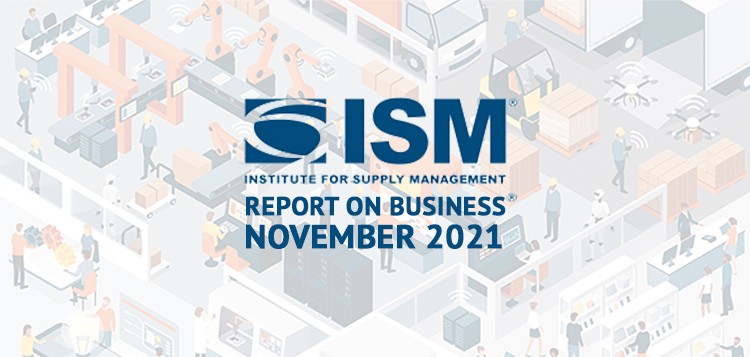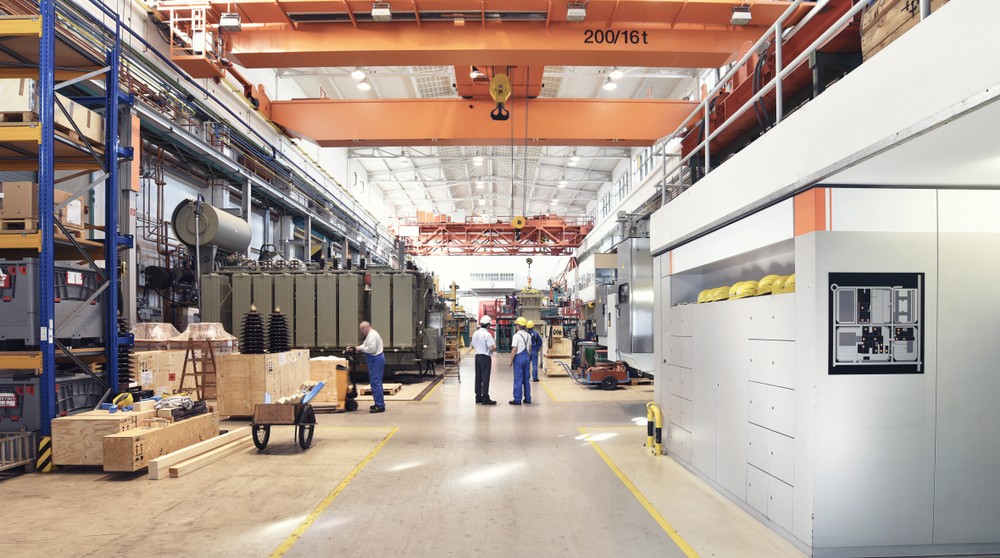“Shortage” is the Keyword for the November 2021 Manufacturing ISM Report On Business

Despite struggle after struggle over the past 18 months, manufacturing has remained undaunted. The November 2021 Manufacturing ISM Report On Business continues to reflect the grit of industry, with a Manufacturing PMI of 61.1% — a number in line with the healthy 12-month moving average.
But behind the numbers, manufacturing executives are heading into 2022 with trepidation. There’s more uncertainty to come, and it’s centered around one concept: shortage. From materials to labor, ongoing shortages mean turbulent times ahead. Can manufacturing hold the line against even more adversity?
Probing the November numbers
Outside of a few outliers in the November report, manufacturing remained on par over the last month. New orders and production ticked up a couple of percentage points each — signaling sustained health and demand. Meanwhile, prices and order backlogs dropped slightly. Imports rose 3.5%, and exports fell less than a point. Supplier deliveries lost 3.4% as manufacturers continue to battle industry headwinds.
Manufacturing is stable — and even growing. The report says, “all five subindexes that directly factor into the Manufacturing PMI were in growth territory.” It’s an extraordinary feat under the circumstances, but manufacturing isn’t entirely out of the woods.

Labor shortages are a growing concern
While labor gained 1.3% in November, there’s still widespread concern about employment levels across manufacturing sectors. “The biggest challenge we have at the moment is finding qualified workers,” said one fabricated metals executive, and according to another industry executive, “Business is strong, but meeting customer demand is difficult due to a shortage of raw materials and labor.”
Like many other industries, manufacturing is experiencing the negative effects of labor shortages. A Reuters survey of economists reported some sectors saw an increase of hundreds of thousands of unfilled or vacated jobs last month. The survey also predicts a likely increase in labor shortages over the next few months.
Several sectors — including metalworking and fabrication — continue to struggle to find qualified applicants. Other sectors, such as food manufacturing, are experiencing self-inflicted labor struggles as they battle massive employee strikes. In either case, essential positions remain vacant.
Materials shortages continue to create chaos
One standout metric of the November report is a 6.6% decrease in customer inventories — down to a historically low 25.1% index rating. This suggests two things: Consumer demand remains strong, but producers can’t maintain material stock due to material shortages. According to the report, virtually all building materials are in short supply — as are chemical products, electrical equipment, and more.
Sustained demand, combined with disrupted supply chains, result in ongoing materials shortages which have, in turn, led to increased prices. With prices going up, obtaining essential materials is growing even more difficult, and the problem will continue until supply chains right themselves.

Weathering the headwinds
Manufacturing has adapted well to the challenges of recent events. Now, it faces significant obstacles in the combination of labor and materials shortages. Without the raw materials and experienced workforce necessary for production, manufacturers are confronting a dual threat that could pose problems for 2022.
